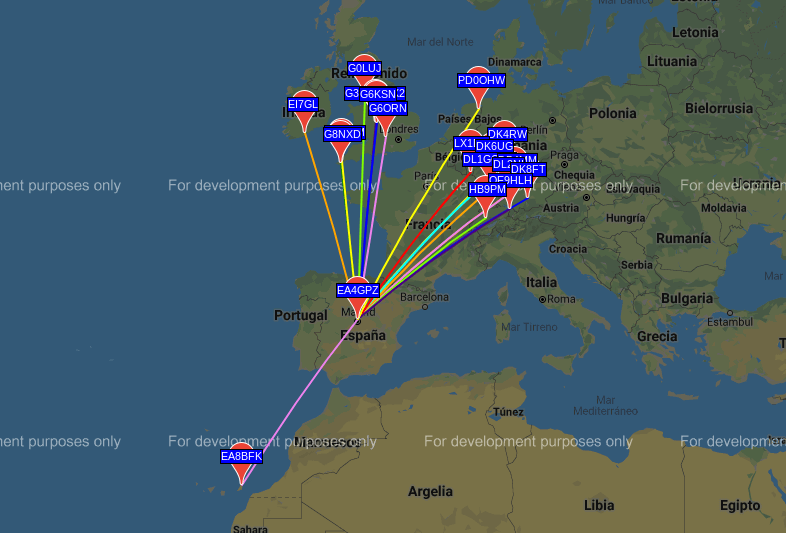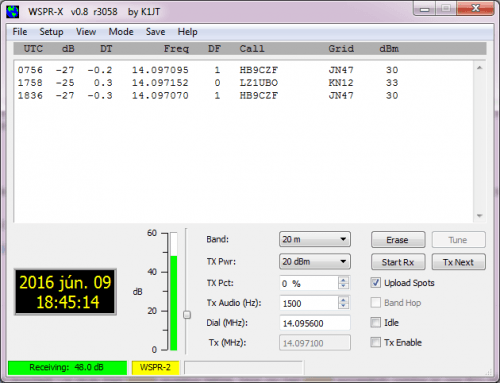LimeRFE WSPR Tests
The LimeRFE is a power amplifier and filter bank solution designed for the low cost TX capable LimeSDR software defined radios. It has multiple bands from HF all the way up to 3.5 GHz, and is capable of putting out about 2W on the HF bands. Currently LimeRFE is crowdfunding over on CrowdSupply with a cost of US$599 or alternatively there is now a cheaper unit for US$449 without support for the cellular bands. The campaign is active for 4 more days from the time of this post, and after that the price is due to rise by another US$100.
The team at LimeMicro sent a unit to Daniel Estévez (EA4GPZ) for testing, and he has recently posted about his results and thoughts when using the LimeRFE for WSPR transmission with a 15m long wire antenna. Daniel connected his LimeRFE to his LimeSDR and used WSJT-X piped into SDRAngel via Pulseaudio to transmit WSPR on the 10m band. He notes that for lower bands, the LimeRFE will still need additional low pass filtering to attenuate harmonics. SDRAngel cannot yet control the LimeRFE so he also created a simple Python script for this purpose.
Unfortunately Daniel's unit only achieved 25dBm instead of the advertised 33dB, but in LimeMicro's post they note that they believe that this is due to shipping damage. However, even with only 0.3W power, Daniel's transmissions from Madrid were able to be picked up in the Canary Islands, Netherlands and Northern England.

